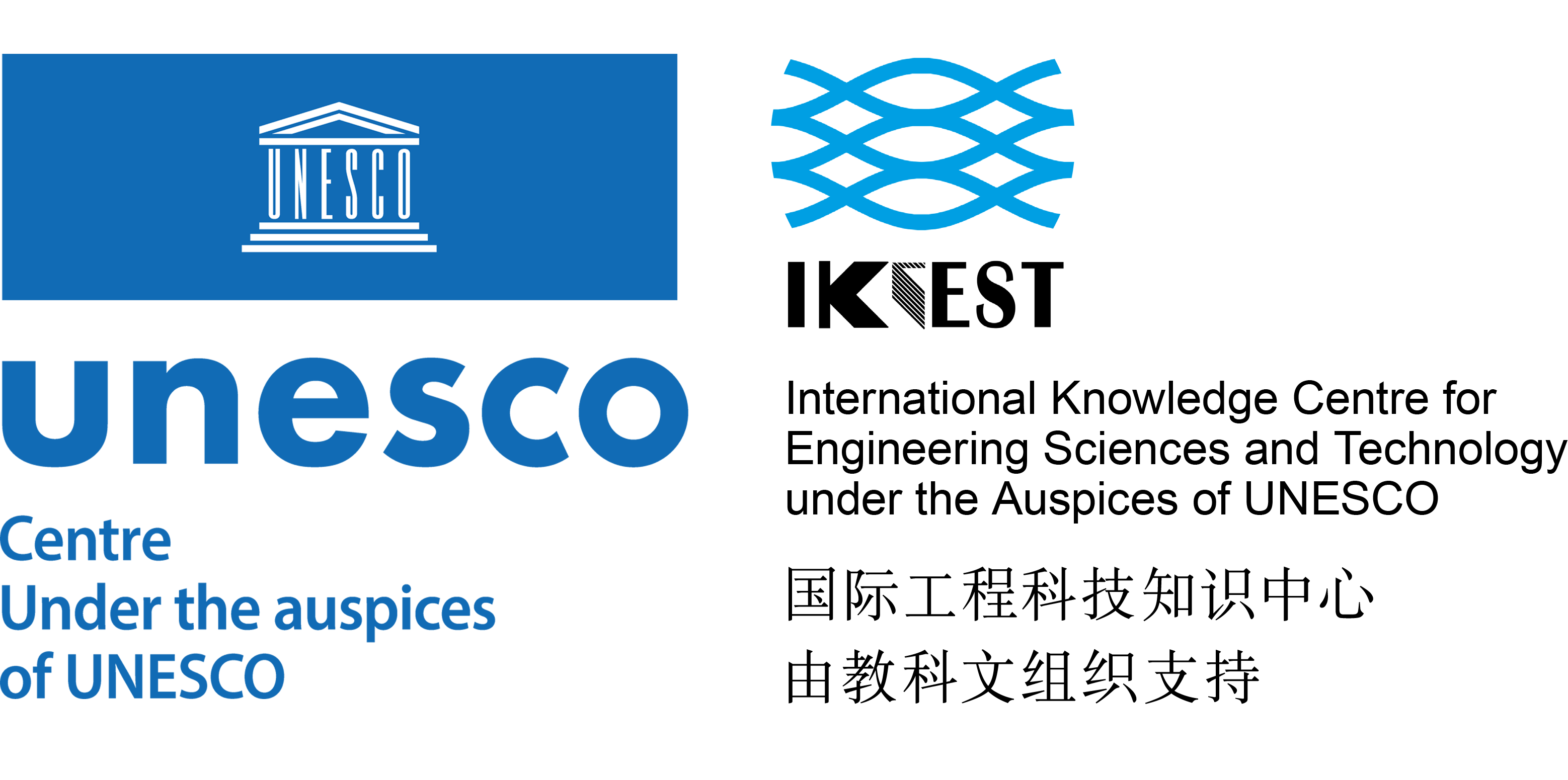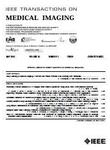Journal
Please choose volume & issue:
-
Flexible Individualized Developmental Prediction of Infant Cortical Surface Maps via Intensive Triplet Autoencoder
Keywords:TrainingSurface morphologyPediatricsSurface reconstructionImage reconstructionCognitionShapePredictive modelsBrain modelingSurface treatmentCortical SurfaceCortical FunctionSurface MappingCortical Surface MapIntensive TripletBrain DevelopmentEvolutionary PatternsPaired DataRecognition TaskAge EstimationFlexible FrameworkLatent FeaturesMixed FeaturesEarly Brain DevelopmentIdentity RecognitionRealistic PredictionsMapping Of PropertiesCorticogenesisAge-related CharacteristicsCortical DevelopmentCortical FeaturesT1w ImagesFréchet Inception DistanceLongitudinal ScansChannel AttentionSpatial AttentionCortical MorphologyMean Absolute ErrorPrediction TaskCortical propertyinfant brainlongitudinal development predictionHumansInfantCerebral CortexMagnetic Resonance ImagingFemaleMaleAlgorithmsImage Processing, Computer-AssistedInfant, NewbornBrain MappingAutoencoderAbstracts:Computational methods for prediction of the dynamic and complex development of the infant cerebral cortex are critical and highly desired for a better understanding of early brain development in health and disease. Although a few methods have been proposed, they are limited to predicting cortical surface maps at predefined ages and require a large amount of strictly paired longitudinal data at these ages for model training. However, longitudinal infant images are typically acquired at highly irregular and nonuniform scanning ages, thus leading to limited training data for these methods and low flexibility and accuracy. To address these issues, we propose a flexible framework for individualized prediction of cortical surface maps at arbitrary ages during infancy. The central idea is that a cortical surface map can be considered as an entangled representation of two distinct components: 1) the identity-related invariant features, which preserve the individual identity and 2) the age-related features, which reflect the developmental patterns. Our framework, called intensive triplet autoencoder, extracts the mixed latent feature and further disentangles it into two components with an attention-based module. Identity recognition and age estimation tasks are introduced as supervision for a reliable disentanglement. Thus, we can obtain the target individualized cortical property maps with disentangled identity-related information with specific age-related information. Moreover, an adversarial learning strategy is integrated to achieve a vivid and realistic prediction. Extensive experiments validate our method’s superior capability in predicting early developing cortical surface maps flexibly and precisely, in comparison with existing methods.
-
Revealing Cortical Spreading Pathway of Neuropathological Events by Neural Optimal Mass Transport
Keywords:Mathematical modelsDiseasesBrain modelingGraph neural networksNeuropathologyPredictive modelsDiffusion processesWhite matterTopologyGeometryOptimal TransportPathways Of SpreadNeural MassOptimal Mass TransportDisease ProgressionNeurodegenerative DiseasesDynamicalAlzheimer’s DiseaseCerebral CortexDeep ModelsFlow FieldPositron Emission Tomography ScansGeneral DynamicsLaw Of ThermodynamicsSecond Law Of ThermodynamicsPathological AccumulationSpread Of PathologyPathological BurdenVariational FrameworkPropagation Of PathologyStandardized Uptake Value RatioMean Absolute ErrorLagrange EquationsTau PropagationMean Absolute Percentage ErrorAlzheimer’s Disease GroupFollow-up ScansGraph Neural NetworksGenerative Adversarial NetworksMultilayer PerceptronOptimal mass transportcortical spreading pathwaygenerative adversarial networkgraph neural networkneurodegenerative diseasesHumansPositron-Emission TomographyAlzheimer DiseaseBrainNeurodegenerative DiseasesCerebral CortexModels, NeurologicalAbstracts:Positron Emission Tomography (PET) is essential for understanding the pathophysiological mechanisms underlying neurodegenerative diseases like Alzheimer’s disease (AD). However, existing approaches primarily focus on stereotypical patterns of pathology burden, lacking the ability to elucidate the underlying propagation mechanisms by which pathologies spread throughout the brain over time. Given that many neurodegenerative diseases exhibit prion-like pathology spread, it is essential to uncover the spot-to-spot flow field between consecutive PET snapshots. To address this, we reformulate the problem of identifying latent cortical propagation pathways of neuropathological burden within the well-established framework of optimal mass transport (OMT). In this formulation, the dynamic spreading of pathology across longitudinal PET scans is inherently constrained by the geometry of the brain cortex. To solve this problem, we introduce a variational framework that characterizes the dynamical system of pathology propagation in the brain, ultimately reducing to a Wasserstein geodesic between two density distributions of pathology accumulation. Furthermore, we hypothesize that a well-characterized mechanism of pathology propagation will enable the prediction of future pathology accumulation at the individual level, paving the way for personalized disease progression modeling. Building on the principles of physics-informed deep models, we derive the governing equation of the underlying OMT model and introduce an explainable, generative adversarial network-inspired framework. Our approach (1) parameterizes population-level OMT dynamics through a flow adjuster and (2) predicts the spreading flow in unseen subjects using a trained flow driver. We validate the accuracy of our model on publicly available datasets, demonstrating its effectiveness in forecasting future pathology accumulation. Since our deep model adheres to the second law of thermodynamics, we further explore the propagation dynamics of tau aggregates throughout the progression of AD. In contrast to traditional methods, our physics-informed approach enhances both accuracy and interpretability, demonstrating its potential to reveal novel neurobiological mechanisms driving disease progression.
-
High-Frequency Modulated Transformer for Multi-Contrast MRI Super-Resolution
Keywords:Feature extractionTransformersSuperresolutionMagnetic resonance imagingImage edge detectionImage restorationImage reconstructionData miningFusesSTEMMagnetic Resonance ImagingGlobal FeaturesFewer ParametersTexture DetailsTarget ModalityLow-resolution InputTransformer BlockConvolutional Neural NetworkImage ContrastFeature InformationT1-weighted ImagesAttention MechanismImage InformationTarget ImageReference ImagePeak Signal-to-noise RatioFeature TransformationAttention MapFinal ReconstructionLightweight ModelSuper-resolution ModelExtraction BlockSingle Image Super-resolutionFusion BlockBlock MatchingStructural Similarity Index MeasureBlocking PairAttention HeadsImage QualityLong-range DependenciesMRImulti-contrast MRI super-resolutiontransformerhigh-frequency modulatedMagnetic Resonance ImagingHumansImage Processing, Computer-AssistedAlgorithmsBrainAbstracts:Accelerating the MRI acquisition process is always a key issue in modern medical practice, and great efforts have been devoted to fast MR imaging. Among them, multi-contrast MR imaging is a promising and effective solution that utilizes and combines information from different contrasts. However, existing methods may ignore the importance of the high-frequency priors among different contrasts. Moreover, they may lack an efficient method to fully utilize the information from the reference contrast. In this paper, we propose a lightweight and accurate High-frequency Modulated Transformer (HFMT) for multi-contrast MRI super-resolution. The key ideas of HFMT are high-frequency prior enhancement and its fusion with global features. Specifically, we employ an enhancement module to enhance and amplify the high-frequency priors in the reference and target modalities. In addition, we utilize the Rectangle Window Transformer Block (RWTB) to capture global information in the target contrast. Meanwhile, we propose a novel cross-attention mechanism to fuse the high-frequency enhanced features with the global features sequentially, which assists the network in recovering clear texture details from the low-resolution inputs. Extensive experiments show that our proposed method can reconstruct high-quality images with fewer parameters and faster inference time.
-
Correntropy-Based Improper Likelihood Model for Robust Electrophysiological Source Imaging
Keywords:NoiseBayes methodsImagingBrain modelingEstimationNoise measurementKernelFunctional magnetic resonance imagingSignal processing algorithmsRandom variablesLikelihood ModelSource ImagesRobust ImageRobust SourceImproper ModelElectrophysiological Source ImagingBayesian InferenceHyperparametersDistribution ModelsGaussian ModelLikelihood FunctionReal-world DatasetsSource ActivityNoise Distributionnon-Gaussian DistributionVariational InferenceObservation NoiseGaussian Assumptionnon-Gaussian NoiseGaussian LikelihoodSource EstimationNoise ModelMagnetoencephalography SignalsBayesian AlgorithmMaximum A PosterioriMagnetoencephalography RecordingsPrior WeightT ModelEquivalent Current DipoleRoot Mean Square ErrorElectrophysiological source imaging (ESI)maximum correntropy criterion (MCC)variational Bayesian inferenceimproper modelnon-Gaussian noiseHumansBrainLikelihood FunctionsAlgorithmsBayes TheoremImage Processing, Computer-AssistedElectroencephalographySignal Processing, Computer-AssistedComputer SimulationNormal DistributionAbstracts:Bayesian learning provides a unified skeleton to solve the electrophysiological source imaging task. From this perspective, existing source imaging algorithms utilize the Gaussian assumption for the observation noise to build the likelihood function for Bayesian inference. However, the electromagnetic measurements of brain activity are usually affected by miscellaneous artifacts, leading to a potentially non-Gaussian distribution for the observation noise. Hence the conventional Gaussian likelihood model is a suboptimal choice for the real-world source imaging task. In this study, we aim to solve this problem by proposing a new likelihood model which is robust with respect to non-Gaussian noises. Motivated by the robust maximum correntropy criterion, we propose a new improper distribution model concerning the noise assumption. This new noise distribution is leveraged to structure a robust likelihood function and integrated with hierarchical prior distributions to estimate source activities by variational inference. In particular, the score matching is adopted to determine the hyperparameters for the improper likelihood model. A comprehensive performance evaluation is performed to compare the proposed noise assumption to the conventional Gaussian model. Simulation results show that, the proposed method can realize more precise source reconstruction by designing known ground-truth. The real-world dataset also demonstrates the superiority of our new method with the visual perception task. This study provides a new backbone for Bayesian source imaging, which would facilitate its application using real-world noisy brain signal.
-
Multiparametric Ultrasound Breast Tumors Diagnosis Within BI-RADS Category 4 via Feature Disentanglement and Cross-Fusion
Keywords:Nakagami distributionFeature extractionBreast tumorsSemanticsBreast cancerUltrasonic imagingHospitalsShapeMedical diagnostic imagingElastographyBreast TumorsFeature DisentanglementMultiparametric UltrasoundBreast CancerSpecific CharacteristicsDeep LearningMalignant TumorsImaging ParametersBenign TumorsComputer-aided DiagnosisSemantic PropertiesB-mode ImagesMultivariate DatasetsMultiparametric ImagingImaging DataConvolutional Neural NetworkK-meansFeature SpaceFeature MapsUltrasound ImagingUltrasound ScreeningYears Of Clinical ExperienceSelf-attention MechanismSpecific Imaging FeaturesAccuracy Of Feature ExtractionTumor MarginDavies-Bouldin IndexMultimodal LearningBreast UltrasoundCalinski-Harabasz IndexMultiparametric ultrasoundfeature disentanglementfeature fusionBI-RADS category 4breast cancerHumansBreast NeoplasmsFemaleUltrasonography, MammaryImage Interpretation, Computer-AssistedBreastDeep LearningAlgorithmsMiddle AgedAbstracts:BI-RADS category 4 is the diagnostic threshold between benign and malignant breast tumors and is critical in determining clinical breast cancer treatment options. However, breast tumors within BI-RADS category 4 tend to show subtle or contradictory differences between benign and malignant on B-mode images, leading to uncertainty in clinical diagnosis. Recently, many deep learning studies have realized the value of multimodal and multiparametric ultrasound in the diagnosis of breast tumors. However, due to the heterogeneity of data, how to effectively represent and fuse common and specific features from multiple sources of information is an open question, which is often overlooked by existing computer-aided diagnosis methods. To address these problems, we propose a novel framework that integrates multiparametric ultrasound information (B-mode images, Nakagami parametric images, and semantic attributes) to assist the diagnosis of BI-RADS 4 breast tumors. The framework extracts and disentangles common and specific features from B-mode and Nakagami parametric images based on a dual-branch Transformer-CNN encoder. Meanwhile, we propose a novel feature disentanglement loss to further ensure the complementarity and consistency of multiparametric features. In addition, we construct a multiparameter cross-fusion module to integrate the high-level features extracted from multiparametric images and semantic attributes. Extensive experiments on the multicenter multiparametric dataset demonstrated the superiority of the proposed framework over the state-of-the-art methods in the diagnosis for BI-RADS 4 breast tumors. The code is available at https://github.com/rzk-code/MUBTD
-
Semi-Supervised Knee Cartilage Segmentation With Successive Eigen Noise-Assisted Mean Teacher Knowledge Distillation
Keywords:NoiseMagnetic resonance imagingImage segmentationAdaptation modelsFeature extractionTrainingData modelsTranslationThree-dimensional displaysAnnotationsMean EducationKnee CartilageCartilage SegmentationFeature RepresentationMRI ScansTeacher ModelDomain ShiftKnee OsteoarthritisLatent FeaturesStudent ModelLow-rank ApproximationModerate NoiseDomain-invariant FeaturesDistillation LossDomain-invariant RepresentationsFeature MapsSingular ValuePaired DataSingular Value DecompositionLow-dimensional SpaceSource DomainDice ScoreUnlabeled DataDomain AdaptationTarget DomainPseudo LabelsConsistency LossSegmentation FrameworkSemi-supervised Learning3D ScanningSubspacecross-modalityknowledge distillationdomain adaptationmulti-domain modeldeep learningmedical image segmentationHumansMagnetic Resonance ImagingCartilage, ArticularOsteoarthritis, KneeAlgorithmsImage Interpretation, Computer-AssistedKnee JointSupervised Machine LearningAbstracts:Knee cartilage segmentation for Knee Osteoarthritis (OA) diagnosis is challenging due to domain shifts from varying MRI scanning technologies. Existing cross-modality approaches often use paired order matching or style translation techniques to align features. Still, these methods can sacrifice discrimination in less prominent cartilages and overlook critical higher-order correlations and semantic information. To address this issue, we propose a novel framework called Successive Eigen Noise-assisted Mean Teacher Knowledge Distillation (SEN-MTKD) for adapting 2D knee MRI images across different modalities using partially labeled data. Our approach includes the Eigen Low-rank Subspace (ELRS) module, which employs low-rank approximations to generate meaningful pseudo-labels from domain-invariant feature representations progressively. Complementing this, the Successive Eigen Noise (SEN) module introduces advanced data perturbation to enhance discrimination and diversity in small cartilage classes. Additionally, we propose a subspace-based feature distillation loss mechanism (LRBD) to manage variance and leverage rich intermediate representations within the teacher model, ensuring robust feature representation and labeling. Our framework identifies a mutual cross-domain subspace using higher-order structures and lower energy latent features, providing reliable supervision for the student model. Extensive experiments on public and private datasets demonstrate the effectiveness of our method over state-of-the-art benchmarks. The code is available at github.com/AmmarKhawer/SEN-MTKD.
-
DistAL: A Domain-Shift Active Learning Framework With Transferable Feature Learning for Lesion Detection
Keywords:TrainingActive learningRepresentation learningUncertaintyLesionsBiomedical imagingAnnotationsLabelingAdaptation modelsData modelsActive LearningFeature LearningTransfer LearningDomain ShiftDetection Of LesionsActive Learning FrameworkRepresentative SampleMedical ImagingSelection StrategyDetection TaskDiscriminative FeaturesTarget DomainMedical Image AnalysisTarget LabelActive Learning MethodsDomain-invariant FeaturesUnlabeled Target DomainTraining DataFeature SpaceLearning StrategiesSource DomainConsistency RegularizationDomain AdaptationGaussian Mixture ModelUnsupervised Domain Adaptation MethodsSelf-supervised LearningComputed Tomography VolumesLabeled Source DomainObject DetectionMedical TasksDomain shiftactive learningcontrastive learninglesion detectionHumansAlgorithmsDeep LearningImage Interpretation, Computer-AssistedBrainMagnetic Resonance ImagingAbstracts:Deep learning has demonstrated exceptional performance in medical image analysis, but its effectiveness degrades significantly when applied to different medical centers due to domain shifts. Lesion detection, a critical task in medical imaging, is particularly impacted by this challenge due to the diversity and complexity of lesions, which can arise from different organs, diseases, imaging devices, and other factors. While collecting data and labels from target domains is a feasible solution, annotating medical images is often tedious, expensive, and requires professionals. To address this problem, we combine active learning with domain-invariant feature learning. We propose a Domain-shift Active Learning (DistAL) framework, which includes a transferable feature learning algorithm and a hybrid sample selection strategy. Feature learning incorporates contrastive-consistency training to learn discriminative and domain-invariant features. The sample selection strategy is called RUDY, which jointly considers Representativeness, Uncertainty, and DiversitY. Its goal is to select samples from the unlabeled target domain for cost-effective annotation. It first selects representative samples to deal with domain shift, as well as uncertain ones to improve class separability, and then leverages K-means++ initialization to remove redundant candidates to achieve diversity. We evaluate our method for the task of lesion detection. By selecting only 1.7% samples from the target domain to annotate, DistAL achieves comparable performance to the method trained with all target labels. It outperforms other AL methods in five experiments on eight datasets collected from different hospitals, using different imaging protocols, annotation conventions, and etiologies.
-
Balancing Multi-Target Semi-Supervised Medical Image Segmentation With Collaborative Generalist and Specialists
Keywords:Image segmentationBiomedical imagingTrainingHeadCollaborationUncertaintyHeartMagnetic resonance imagingInterferenceEsophagusMedical ImagingMedical Image SegmentationSemi-supervised Medical Image SegmentationTarget ClassDetection ModuleBalance TrainingTarget SegmentTraining SetValidation SetSpecific TasksProjectorNatural ImagesClass ImbalanceSegmentation AccuracySegmentation TaskUnlabeled DataPixel LevelSegmentation PerformanceTeacher NetworkConsistency LossMedical TasksOrgans At RiskStudent NetworkSemi-supervised MethodsCollaborative TrainingState Of The Art MethodsConsistency RegularizationSynapseSegmentation ResultsClassifier TrainingMedical image segmentationsemi-supervised learningmulti-target segmentationHumansImage Processing, Computer-AssistedAlgorithmsSupervised Machine LearningBrainHeadAbstracts:Despite the promising performance achieved by current semi-supervised models in segmenting individual medical targets, many of these models suffer a notable decrease in performance when tasked with the simultaneous segmentation of multiple targets. A vital factor could be attributed to the imbalanced scales among different targets: during simultaneously segmenting multiple targets, large targets dominate the loss, leading to small targets being misclassified as larger ones. To this end, we propose a novel method, which consists of a Collaborative Generalist and several Specialists, termed CGS. It is centered around the idea of employing a specialist for each target class, thus avoiding the dominance of larger targets. The generalist performs conventional multi-target segmentation, while each specialist is dedicated to distinguishing a specific target class from the remaining target classes and the background. Based on a theoretical insight, we demonstrate that CGS can achieve a more balanced training. Moreover, we develop cross-consistency losses to foster collaborative learning between the generalist and the specialists. Lastly, regarding their intrinsic relation that the target class of any specialized head should belong to the remaining classes of the other heads, we introduce an inter-head error detection module to further enhance the quality of pseudo-labels. Experimental results on three popular benchmarks showcase its superior performance compared to state-of-the-art methods. Our code is available at https://github.com/wangyou0804/CGS.
-
Mitigating Data Consistency Induced Discrepancy in Cascaded Diffusion Models for Sparse-View CT Reconstruction
Keywords:Image reconstructionDiffusion modelsComputed tomographyTrainingDiffusion processesPrevention and mitigationImage synthesisIterative methodsInverse problemsGaussian noiseDiffusion ModelSparse-view Computed TomographySparse-view Computed Tomography ReconstructionComputed TomographyData DistributionComputational CostImage ReconstructionRadiation ExposureLatent SpaceImage GenerationHigh-quality ImagesPixel SpacingLow-quality ImagesInference StepImage QualityGaussian NoiseDiffusion ProcessRandom NoiseTransverse PlaneComputed Tomography ImagesNoisy ImagesLatent ModelReversible ProcessInverse ProblemComputed Tomography VolumesFiltered Back ProjectionReconstruction ResultsStructural Similarity Index MeasureLinear Inverse ProblemTotal Variation RegularizationSparse-view CT reconstructiondiffusion modeltraining-sampling discrepancyalternating direction method of multipliersdata consistencyTomography, X-Ray ComputedImage Processing, Computer-AssistedHumansAlgorithmsPhantoms, ImagingAbstracts:Sparse-view Computed Tomography (CT) image reconstruction is a promising approach to reduce radiation exposure, but it inevitably leads to image degradation. Although diffusion model-based approaches are computationally expensive and suffer from the training-sampling discrepancy, they provide a potential solution to the problem. This study introduces a novel Cascaded Diffusion with Discrepancy Mitigation (CDDM) framework, including the low-quality image generation in latent space and the high-quality image generation in pixel space which contains data consistency and discrepancy mitigation in a one-step reconstruction process. The cascaded framework minimizes computational costs by replacing some inference steps from pixel to latent space. The discrepancy mitigation technique addresses the training-sampling gap induced by data consistency, ensuring the data distribution is close to the original diffusion manifold. A specialized Alternating Direction Method of Multipliers (ADMM) is employed to process image gradients in separate directions, offering a more targeted approach to regularization. Experimental results across several datasets demonstrate CDDM’s superior performance in high-quality image generation with clearer boundaries compared to existing methods, highlighting the framework’s computational efficiency.
-
MR Spatiospectral Reconstruction Integrating Subspace Modeling and Self-Supervised Spatiotemporal Denoising
Keywords:Image reconstructionSpatiotemporal phenomenaTrainingNoise reductionNoise measurementImagingBiological system modelingTraining dataSignal to noise ratioSubspace constraintsSubspace ModelNumerical SimulationsWhite NoiseImage ReconstructionConvergence Of AlgorithmSelf-supervised LearningHigh-dimensional ProblemsFunction Of InterestMagnetic Resonance Spectroscopic ImagingSubspace ProjectionTraining DataHealthy VolunteersSimulated DataIterative AlgorithmTraining StrategyRegularization ParameterReconstruction MethodNoisy DataPatch SizeReconstruction AlgorithmLow-dimensional ModelSelf-supervised TrainingProximal OperatorVivo ExperimentsSignal-to-noise Ratio LevelsFunctional MetabolitesAuxiliary VariablesPatch ExtractionLow-dimensional SubspaceSet ConstraintsMR spectroscopic imagingsubspace imagingself-supervised denoisingplug-and-play algorithmspatiotemporal denoisingfixed point iterationAlgorithmsImage Processing, Computer-AssistedMagnetic Resonance ImagingHumansBrainSupervised Machine LearningSignal-To-Noise RatioAbstracts:We present a new method that integrates subspace modeling and a pre-learned spatiotemporal denoiser for reconstruction from highly noisy magnetic resonance spectroscopic imaging (MRSI) data. The subspace model imposes an explicit low-dimensional representation of the high-dimensional spatiospectral functions of interest for noise reduction, while the denoiser serves as a complementary spatiotemporal prior to constrain the subspace reconstruction. A self-supervised learning strategy was proposed to train a denoiser that can distinguish the spatiotemporally correlated signals from uncorrelated noise. An iterative reconstruction formalism was developed based on the Plug-and-Play (PnP)-ADMM framework to synergize the subspace constraint, plug-in denoiser and spatiospectral encoding model. We evaluated the proposed method using numerical simulations and in vivo data, demonstrating improved performance over state-of-the-art subspace-based methods. We also provided theoretical analysis on the utility of combining subspace projection and iterative denoising in terms of both algorithm convergence and performance. Our work demonstrated the potential of integrating self-supervised denoising priors and low-dimensional representations for high-dimensional imaging problems.
Hot Journals
- Risk Breakdown Matrix for Risk-Based Inspection of Transportation Infrastructure Projects
- Social Control in Outsourced Architectural and Engineering Design Consulting Projects: Behavioral Consequences and Motivational Mechanism
- 2022 Best Paper Award
- Hold-Ups and Failures in Negotiated Order: Unearthing the Nuances of Rework Causation in Construction
- Prevalence and Risk Factors for Poor Mental Health and Suicidal Ideation in the Nigerian Construction Industry
- CFRP–Cable-Stayed Bridge Hybrid with Partial Suspension and a Span Exceeding 3,000 m: Concept, Optimization, and Construction
- Impact of Wind Load Characteristics on Computed Bridge Stay-Cable Forces Used for Bridge Health Monitoring
- Weak-End and Frequency Detection of Elastically Supported Bridges by Contact Residual Response of Two-Axle Test Vehicle in a Round Trip
- Development of Performance-Based Fragility Curves of Coastal Bridges Subjected to Extreme Wave-Induced Loads
- An Analytical Model to Evaluate Short- and Long-Term Performances of Post-Tensioned Concrete Box-Girder Bridges Rehabilitated by an Ultrahigh-Performance Concrete Overlay
- Three-Dimensional Velocity Distribution in Straight Smooth Channels Modeled by Modified Log-Law
- Experimental Investigation on Flow Past Two and Three Side-by-Side Inclined Cylinders
- An Experimental Investigation of Rotor–Box Aerodynamic Interaction 1
- Modeling Gas–Liquid Flow Between Rotating and Nonrotating Annular Disks
- Entry Length Requirements for Two- and Three-Dimensional Laminar Couette–Poiseuille Flows
Advanced Materials (3,745)
- Structured Perovskite Light Absorbers for Efficient and Stable Photovoltaics
- Strategies for High‐Performance Solid‐State Triplet–Triplet‐Annihilation‐Based Photon Upconversion
- Atomic Engineering Catalyzed MnO2 Electrolysis Kinetics for a Hybrid Aqueous Battery with High Power and Energy Density
- Crystal Adaptronics: Global Performance Indices for Dynamic Crystals as Organic Thermal Actuators (Adv. Mater. 20/2020)
- Enlightening Materials with Photoswitches
Acta Astronautica (1,768)
- Mixed-integer trajectory optimization with no-fly zone constraints for a hypersonic vehicle
- Adaptive control design for active Pogo suppression of large strap-on liquid launch vehicles
- Machine learning based approach for modeling and forecasting of GPS–TEC during diverse solar phase periods
- Effect of two-dimensional micro-cavity surface on hypersonic boundary layer
- Investigation on burning behaviors of aluminum agglomerates in solid rocket motor with detailed combustion model








 User Center
User Center My Training Class
My Training Class Feedback
Feedback





